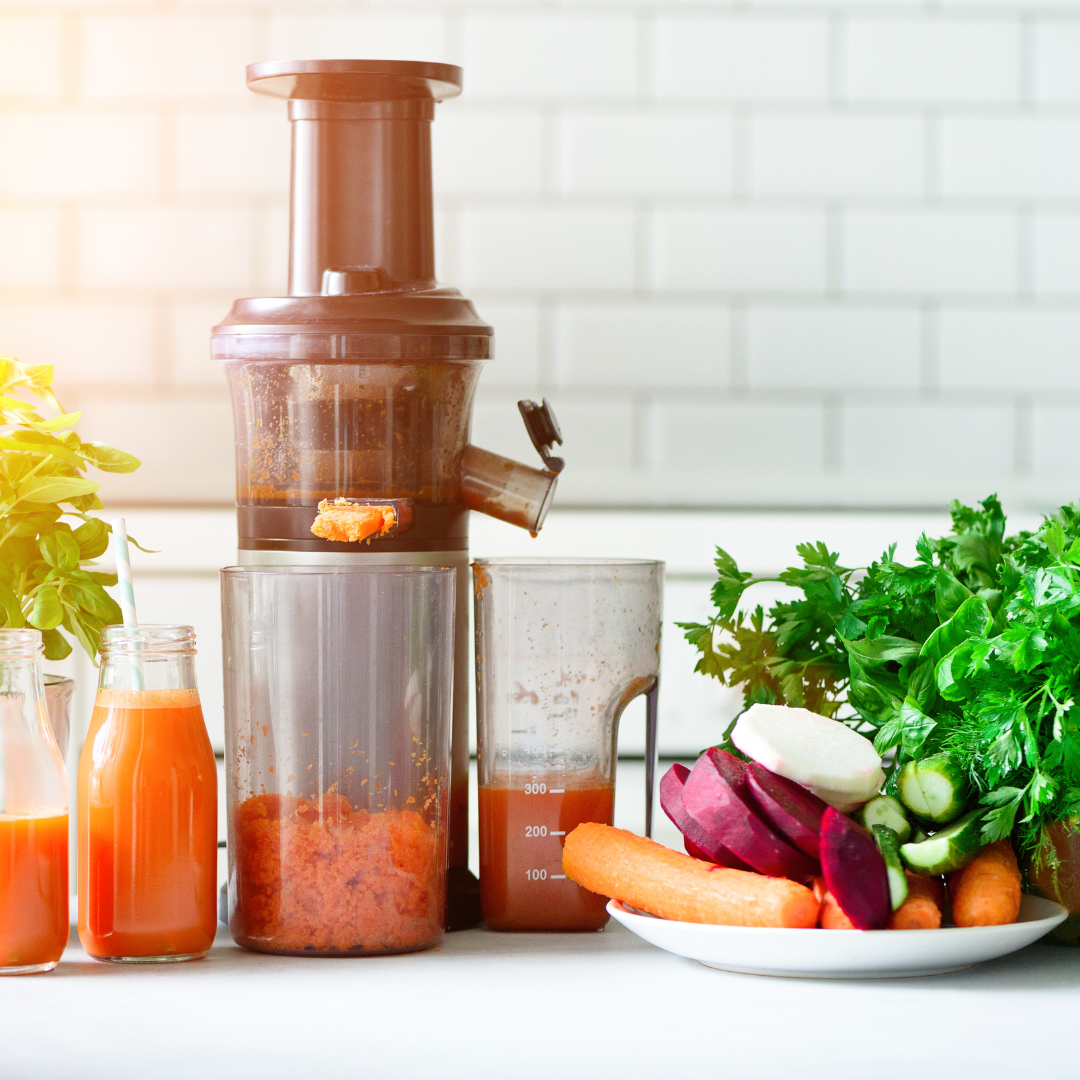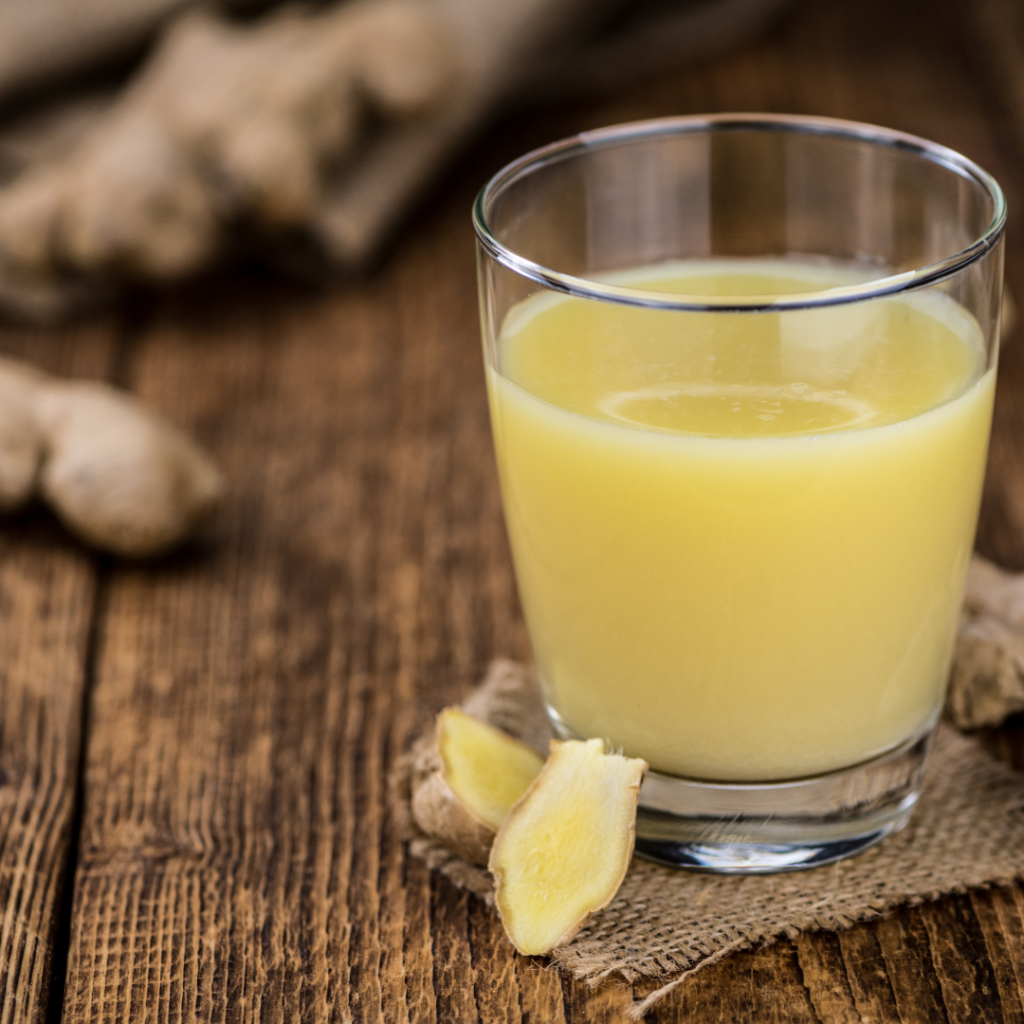
In the world of healthy beverages, juicing and blending have become popular methods for incorporating fruits and vegetables into our diets.
Both techniques offer unique advantages and play a significant role in promoting a balanced and nutritious lifestyle.
In this blog post, we will explore the differences between juicing and blending, as well as the benefits of each method… juicing vs blending.
Juicing:
Juicing involves extracting the liquid or juice from fruits and vegetables, leaving behind the pulp and fiber. This process is typically performed using a juicer machine specially designed to separate the juice from the solids. The result is a nutrient-dense liquid that is easy to digest and quickly absorbed by the body.
Benefits of Juicing:
Increased Nutrient Absorption: Juicing allows you to consume a concentrated amount of vitamins, minerals, and antioxidants found in fruits and vegetables. Without the fiber, nutrients are more readily available for absorption, providing an instant boost of nutrition.
Enhanced Digestion: Since juicing removes the fiber, the digestive system doesn’t have to work as hard to break down the nutrients. This can be beneficial for individuals with digestive issues or those looking for a gentle way to nourish their bodies.
Quick and Convenient: Juicing provides a convenient way to consume a variety of fruits and vegetables in a single glass. It’s an ideal option for busy individuals who want to increase their nutrient intake without spending much time on meal preparation.
Blending:
Blending involves blending whole fruits and vegetables, including the fiber, into a smooth consistency. This process is typically done using a high-speed blender (see Kitchen Tech post), which ensures the ingredients are thoroughly combined and results in a thicker, more substantial beverage known as a smoothie.
Benefits of Blending:
Fiber-Rich Nourishment: Blending retains the fiber content of fruits and vegetables, providing a feeling of fullness and promoting healthy digestion. The fiber also helps slow down the release of sugars into the bloodstream, preventing blood sugar spikes.
Sustained Energy Release: The presence of fiber in blended beverages slows down the absorption of nutrients, resulting in a more gradual release of energy. This can help maintain stable blood sugar levels and provide sustained energy throughout the day.
Customizable and Versatile: Blending allows for endless creativity and customization. You can easily incorporate additional ingredients like nut butters, seeds, protein powders, or superfoods to enhance the nutritional profile and flavor of your smoothie.
When it comes to choosing between juicing vs blending, a general rule of thumb is to juice your vegetables and blend your fruits. This guideline helps optimize the benefits of each method based on the nutritional composition of different produce.
Vegetables tend to have lower sugar content and higher water content, making them ideal candidates for juicing. Juicing vegetables allows you to extract their nutrient-rich juices while minimizing the intake of excess sugar. Green leafy vegetables like kale, spinach, and cucumber are particularly well-suited for juicing, as they offer an abundance of vitamins, minerals, and antioxidants in a concentrated form.
On the other hand, fruits are naturally sweeter and contain more fiber. Blending fruits, including their fiber-rich skins, pulp, and seeds, helps retain the valuable dietary fiber while creating a smooth and delicious beverage. Fruits such as berries, bananas, apples, and citrus fruits work beautifully in smoothies, providing an array of vitamins, minerals, and natural sweetness.
Full Power Juicing:

Ginger is well-known for its potent anti-inflammatory properties. Juicing ginger provides a concentrated dose of gingerols, which have been shown to reduce inflammation in the body.
Regular consumption of ginger juice may help alleviate symptoms of inflammatory conditions such as arthritis, joint pain, and muscle soreness.
Immune Booster: Ginger is rich in antioxidants and immune-boosting compounds that can help strengthen the immune system. Juicing ginger allows you to access these immune-enhancing properties in a concentrated form.
Ginger juice may help ward off infections, reduce the severity of cold and flu symptoms, and support overall immune function.
Anti-Microbial Effects: Ginger exhibits potent anti-microbial properties, thanks to its active compounds. Juicing ginger can help inhibit the growth of harmful bacteria and fungi, promoting a healthy balance of gut flora. This can contribute to improved digestive health and overall well-being.
Blood Circulation: Ginger has a warming effect on the body and can help improve blood circulation. Juicing ginger may support cardiovascular health by reducing blood clotting, lowering blood pressure, and improving blood flow. It can also help enhance oxygen and nutrient delivery to the body’s tissues.
Juicing vs Blending: Conclusion
Juicing and blending are two wonderful techniques to incorporate more fruits and vegetables into your diet. Juicing offers the advantage of quick nutrient absorption and easy digestion, while blending provides the benefits of fiber-rich nourishment and sustained energy release.
Both methods have their place in a healthy lifestyle, and it ultimately depends on personal preference and individual health goals. Whether you choose to juice or blend, the key is to prioritize whole, fresh ingredients and experiment with a variety of flavors and combinations. Cheers to vibrant health and delicious beverages!